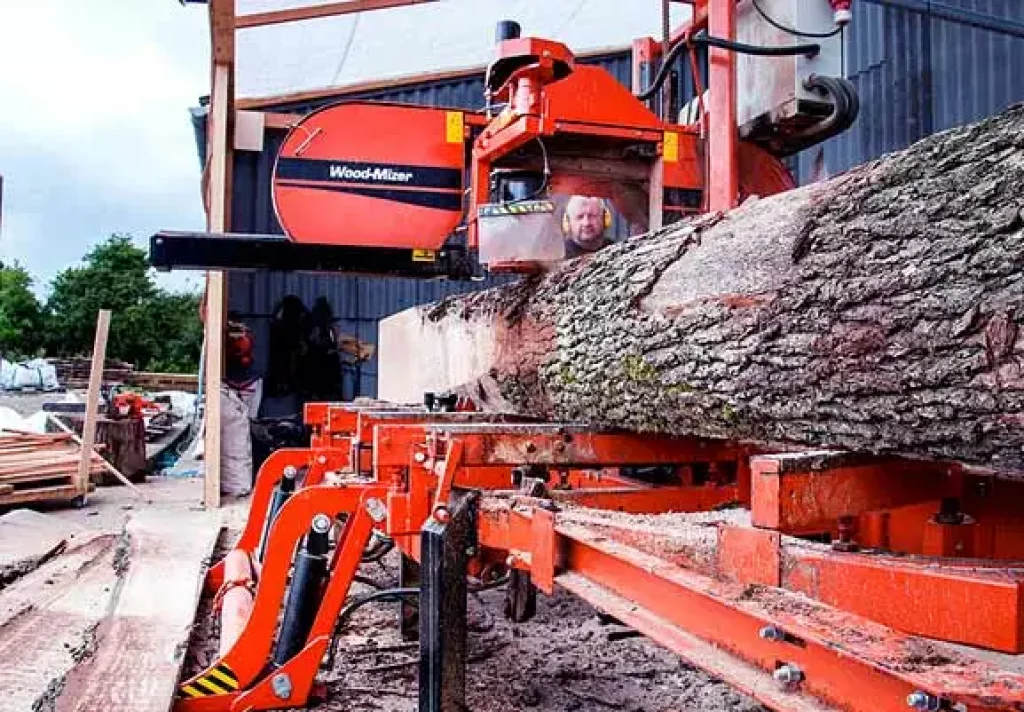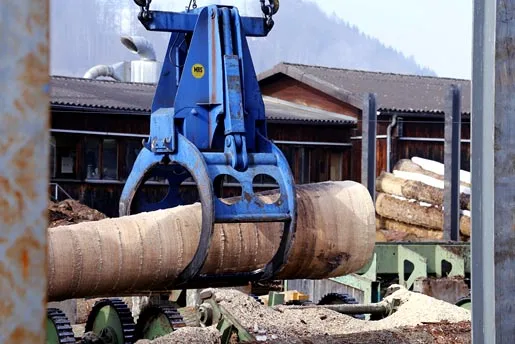Do you know what are produced in sawmills? If you take a look around your environment, you’d find out that a lot of things are wooden like your floors, furniture, home, and so much more. So it’s only normal that you are interested in how woods are made.
The sawmill industry has evolved and gone through so many stages before it arrived at what we have today. Before now, sawmills were somewhat dangerous and people working them had to use a lot of strength. You can read this article to learn more about the history of sawmills.
But now, physical strength isn’t a requirement to operate sawmills anymore. This is because they are now highly digitalized. This also makes it possible for this industry to cater to the high demand for lumbers.
In this article, we will discuss some basic things about sawmills, from what it means, to the process involved, and the various types available.
Definition of Sawmill
The word sawmill can be defined in two ways. The first and most common definition is the actual location where timber is produced. Sawmill in this sense can otherwise be called lumber mill. It ois simply any facility where logs are processed and turned into lumber.
These facilities typically need to produce a large quantity of lumber. Due to this high demand, modernized equipment that significantly increases their efficiency rate is used in these facilities. Before sawmills, planks and boards used to be produced manually with either a whipsaw or handsaw.
The 2nd definition of the word sawmill is the machine that is used in the process of wood production. Nowadays, these machines are motorized and come in different types.
What Are Produced in Sawmills?
Lumber mills these days are usually very large companies that carry out large commercial wood production. They often have hundreds of staff that works in shifts to meet up with the high demand. These facilities specialize in hardwoods and softwoods.
Softwoods that are processed in these facilities include:
- Hemlock
- Redwood
- Cedar
- Spruce
- Pine
These woods are typically used during residential construction.
Hardwoods that are processed in these facilities include:
- Maple
- Beech
- Walnut
- Oak
- Cherry
These are usually used for building wooden panels, flooring, and furniture.
Not only do lumber mills make specific timber for construction projects, but they also make premade products. These premade products are often available in varying sizes and shapes.
Because of how high lumber demand is, these facilities usually have production lines. They often rely heavily on these production lines to ensure consistency and quality is maintained in all of their products. Visit https://hirschbach.de/ to learn more about the type of products made in lumber mills.
Timber Production Process
The basic operation of sawmills is like what it was 100 years before now. Typically, a log is put into one end of the machine, and by the time it gets to the other end, it would be dimensional lumber, otherwise called timber.
However, before the log even gets to the lumber mill and processed into timber, the following steps need to be done:
- Trees that will be harvested will be selected.
- Next, limbing will be done on the selected trees. This involves climbing up the tree and cutting off the limbs.
- The logs will then be loaded on the logging trucks and then transported to the lumber mill.
- When the logs get to the facility, they will be debarked. After which decking will be done. This is the phase where the logs are organized based on their size, use, and species.
- Next, a head saw will be used to cut the logs for the first time. The end of this phase will leave unfinished logs, and they still need to be further processed.
- Depending on the log’s quality and specie, it’ll be broken down using a lumber edger. The result of this process usually is a four-sided timber.
- The next stage involves trimming the lumber according to the needed dimension. Dimensional lumbers are selected based on width and thickness. The thickness typically ranges from two to five inches, while the width ranges from two to twelve inches.
- Once the process is complete, the timber will be stored in the facility’s air-dried store called a kiln.
All these show that timber production is beyond just cutting a tree down. It takes several processes that luckily, can be achieved effectively with enough workers and the right machine. This brings us to our next topic.

Types of Sawmill
Remember we said another definition of the word sawmill is the machine used in the production of woods. Well, these machines are of two types namely portable and stationary sawmills.
Stationary Sawmills
Stationary sawmills as the name suggests are permanently fixed. They cannot be moved about and are usually relatively large. Due to their size, they are used to process large logs.
Pros
- Good for commercial use
- Weather condition doesn’t affect production
- Production level is high
Cons
- Fixed; can’t be transported
- Takes up a lot of space
Portable Sawmills
Portable sawmills unlike stationary ones can be transported on trucks and trailers. They are; however, smaller when compared to stationary ones. So, they are commonly used for professional and/or personal purposes.
Portable sawmills are of different types based on their functions namely:
- Band mills
- Chainsaw mills
- Swinging blade mills
Pros
- Could be used in dense forests or small areas
- Easily transported
Cons
- Lacks cutting speed
- Production can be affected by the weather
- Rough cuts
Conclusion
So, what are produced in sawmills? Sawmills produce woods through different stages starting from selecting the trees down to processing the logs. Different types of hardwood and softwoods are produced in these facilities. Premade products are another option lumber mills offer their customers.
Read also
How to find the Best Benchtop Jointer and Reviews
10 Different Type of Power Tools and Their Usage

I love all things tech, and I wear many hats – tech lover, business starter, digital marketer, and blogger. I know the ins and outs of Digital Marketing, SEO, SEM, SMM, and how to generate leads. My goal? Making things simple for you with clear guides and reviews. I stumbled upon WordPress while creating my first business site, and I fell in love with it right away. When I’m not building websites, creating content, or boosting clients’ online efforts, I’m focused on staying healthy, hanging out with family, and exploring the world. Connect with me on Facebook, Twitter, Linkedin, or read my complete biography.

